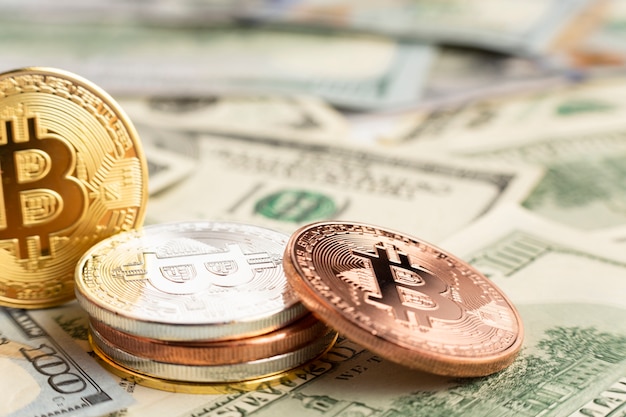
At the beginning of 2020, the banks and the entire fintech industry had plans for development, marketing, innovations but, this could not happen as expected due to the advent of Covid-19. The fintech industry has been in the market for a decade. After the pandemic, it has become more populous in the global market. People shifted to digital banking and financial services that encouraged more small-scale fintech businesses and startups.
The Impact Of Covid-19 On The Fintech Sector
This time the financial crisis was not because of any human manipulations or natural recession. It is the economic crisis due to a worldwide lockdown due to a global pandemic that impacted the fintech sector majorly in a positive manner.
With new technological advancements, and creative banking & financial solutions, fintech will be normalised globally very soon, and the traditional banking services will be obsolete. Let’s discuss how fintech helped during the pandemic and what we can expect from the fintech industry in the future.

1) Digital Payments & NFC Payments
Cash is no more a king of the market. Before the pandemic, maximum payments were made by cash. During a pandemic, people were scared of using cash as there was a fear of virus cross-contamination. People started using digital payment i.e. digital wallets, internet banking, online payment gateways, etc. Consequently, post Covid-19 people have now adopted digital payments as the primary mode of payments itself. Even the street vendors are now having QR codes through which one can make the payment.
This way, fintech could prove its transparency and get the global adoption for digital payments naturally.
But the story doesn’t end here! Now, fintech industries have ways to offer contactless payments like NFC payments. While making NFC payments, you need to keep your smartphone near the receiver’s machine. Some encrypted data will be transferred through which the payment will be made. Similarly, one can use virtual cards for transactions up to a certain amount.
In the coming future, you may not get a chance to use cash because digital payments seem a more convenient, and eco-friendly way to do transactions.
2) Neo Banking
Since there was a lockdown, banks tried to give maximum services online that are still persisting. For example, now you can apply for loans online, open bank accounts through smartphones, and get your bank statements in the mail. Undoubtedly, there was internet banking, phone banking and SMS banking. However, after Covid-19, things changed. Now people barely go to banks as everything is there on your phone.
This led to another innovation, called “Neo Banks” (online-operating banks). These banks do not have any physical presence. They are fully digital banks that offer all banking and financial services to their customers.
These banks use AI and digital technologies to serve their customers with less operating cost resulting in a cheaper alternative to traditional banking. Despite having such luring benefits, these banks face challenges getting customers as they do not have the physical presence that goes against them. Still, we can expect these banks will be more popular and adaptable in the future. Moreover, according to Statista, the market for neo banks can rise to $722.8 billion by 2028 that is currently $47.1 billion in 2021.

3) Voice-Enabled Payments
During the lockdown, the need for contactless payments arose. Voice-enabled payments are its one-step ahead innovation, which is what the fintech industry has come up with. Through this feature, one can make a payment just as setting an alarm on the smartphone through voice assistance. This is quite helpful for visually impaired people. They can have access to the cashless technology of the fintech industry.
Currently, a few companies are providing this feature like Venmo, Paypal, Square Cash. In addition, some banks such as Bank of America, Santander Bank provide this service to their customers. Soon other companies will include this feature in their offerings too.
4) Digital Financial Services
Unlike other sectors, the financial sector of the fintech industry has seen a negative impact on the Covid-19. In 2018, the market had a value of $127.66 billion and it was expected to reach $309.98 billion with a growth rate of 24.8% in 2022. In reality, the market went down. For instance, the investment sector saw a decline of 30% across the UK.
Although the figures went down, people took more interest in the investment sector that somewhat helped the fintech industry. Moreover, cryptocurrencies and bitcoins became a public attraction too.

Key Takeaways
Let’s talk about future of the fintech in a brief:
- Digital payments are rising rapidly, soon one can expect that they will overtake the usage of cash exchange that will lead to monetary transparency. Also, NFC payments are expected to be the future of cashless transactions.
- Neo banks (the banks without physical presence) have a market of $47.1 billion which is anticipated to rise to $722.1 billion by 2028.
- Technological innovation for visually impaired citizens – Voice-enabled payments.
- Although digital financial services had a negative impact during the lockdown in 2020, it got its market value as people started building interest in this field.
Summary
Therefore, fintech and the digital transformation got a chance to come up with innovations during the lockdown. In other words, one can say that the fintech industry could convince the market for digitalisation in the financial sector and got an advantage to make people comfortable with the new innovations. In a way, lockdown and the pandemic helped the fintech industry to shape the future for itself.
